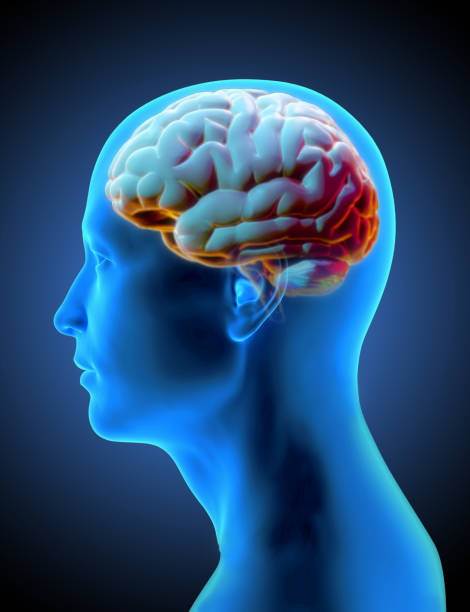Imagine walking into a room filled with strangers. You haven’t spoken a word. You haven’t heard one either. Yet something is already being said. You feel the subtle tension of someone glancing at you from across the room. You sense comfort in the way another person smiles—not just with their lips, but with their whole face. You know who is confident, who is nervous, who seems open, who seems closed. All of this, before a single syllable slips into the air.
This is not magic. It’s the mind’s secret language. It’s the silent, invisible current flowing beneath every interaction we have, shaping our relationships, guiding our judgments, and connecting us in ways that words never could.
Human beings are linguistic creatures, but we are not merely creatures of language. Long before we spoke, we knew how to communicate. We used movement, expression, proximity, and rhythm. We used energy. And even now, beneath our eloquent sentences and crafted emails, that primal language still runs deep.
So, what exactly happens when we “speak” without words? What does science say about this hidden mode of communication? And why does it matter more than ever in a world so obsessed with speech?
Born to Read Minds
Long before you learned to talk, you were already a master of silent communication. Babies just days old can detect eye contact. They respond to tone, rhythm, and facial expressions. They cry to signal need and smile to reinforce bonding. No vocabulary needed.
This is the foundation of what neuroscientists call social cognition—the brain’s ability to understand and respond to others. Our brains are wired to be social. We don’t just observe others; we simulate them internally. When you see someone smile, your brain activates the same regions that fire when you yourself smile. This is the basis of mirror neurons, a system discovered in the 1990s that helps explain how we “feel” what others feel.
From infancy onward, we begin developing what psychologists call theory of mind—the understanding that others have thoughts, emotions, and intentions that are separate from our own. And we use this knowledge to navigate the world, mostly without words. You don’t need someone to say, “I’m frustrated.” You can feel it in the way they close the door or avoid your eyes.
This ability to sense others—to decode their mental states from facial expressions, posture, gestures, tone, and silence—is the scaffolding of human connection. It is why humans are so good at storytelling, at working in teams, at caring for one another. It’s also why we can be so easily misunderstood.
The Silent Orchestra of Body Language
Most of the emotional information we send and receive doesn’t come through what we say—it comes through how we behave. Body language is the unsung symphony of every social interaction, comprising gestures, posture, movement, and microexpressions that the brain interprets almost instantly.
Take facial expressions. Charles Darwin, in his lesser-known book The Expression of the Emotions in Man and Animals, proposed that emotions like fear, anger, joy, and sadness are expressed similarly across cultures—and he was right. Paul Ekman’s groundbreaking research later showed that six basic emotions are universally recognized: happiness, sadness, anger, fear, surprise, and disgust. Even people who have never encountered modern media or Western culture still read these expressions accurately.
But the face is just the overture. The rest of the body plays too. Crossed arms can signal defensiveness. Leaning in can show interest. Tapping feet may reveal anxiety. Posture tells stories. Movement tells truths. And often, your body gives away what your words are trying to hide.
These signals operate below the level of conscious control. You don’t decide to clench your jaw when annoyed—it just happens. Your brain decodes someone’s raised eyebrow or widened eyes faster than you can analyze it. It’s fast. Automatic. And often, more truthful than speech.
Tone: The Music in Our Voices
Words are just symbols. It’s how we say them that adds color, meaning, and emotion.
Tone of voice—also known as prosody—is the rhythm, pitch, and volume that ride on top of our speech. It’s what lets you know your friend is joking when they call you “a disaster.” It’s what conveys love, sarcasm, fear, or kindness. It’s what parents use instinctively when cooing at a baby. And it’s often what people with autism or traumatic brain injuries struggle with, because the reading and expression of tone is a complex neurological dance.
Studies show that we rely more on tone and body language than on actual words, especially in emotionally charged situations. In fact, researcher Albert Mehrabian famously concluded that only 7% of emotional meaning in communication is conveyed through words, while 38% comes from tone of voice and 55% from body language.
Though those numbers are often misapplied, they capture a truth: emotion rides on tone and gesture, not on vocabulary. A comforting whisper can heal more than an eloquent paragraph. An angry shout can wound more than any insult.
The Science of Eye Contact
The eyes have long been called the window to the soul—and neuroscience now backs that up. Eye contact activates a cascade of brain processes tied to attention, trust, and empathy.
When two people lock eyes, their brains synchronize. Heart rates align. Pupils dilate. A silent exchange takes place that is both biologically ancient and emotionally profound. Eye contact enhances connection in therapy, improves collaboration in teamwork, and boosts persuasion in conversation.
But it can also intimidate. Too much eye contact can feel invasive. Different cultures interpret it differently—what feels honest in one culture may seem aggressive in another. Even within a single society, eye contact is nuanced. Lovers gaze. Rivals glare. Parents stare down. Strangers glance away.
Neurodivergent individuals, such as those on the autism spectrum, may find eye contact uncomfortable or overwhelming. For them, communication without it isn’t broken—it’s just different. And this reminds us that the mind’s silent language comes in many dialects.
Touch: The Forgotten Sense of Connection
In a hyper-digital world, we often forget the language of touch. But the human body never has. Touch is the first sense to develop in the womb and remains one of our most powerful tools for connection.
When someone places a reassuring hand on your shoulder, your brain releases oxytocin—the bonding hormone. A hug can lower cortisol, reduce blood pressure, and slow your heartbeat. A handshake can build trust. Touch is so potent that even brief physical contact between strangers can increase generosity, as shown in studies on tipping behavior in restaurants.
But touch is also delicate. It must be welcomed, respectful, culturally appropriate. When misused, it becomes invasive. When neglected, it leaves emotional scars. In orphanages where babies receive little physical contact, developmental delays and emotional issues abound. Touch is not a luxury—it is a language, vital and visceral.
Silence Speaks Volumes
Silence is not the absence of communication. Often, it is the most powerful form.
Silence can express respect, hesitation, anger, sadness, or awe. It can be oppressive or comforting. In some cultures, silence is prized as a sign of thoughtfulness or humility. In others, it feels like rejection or avoidance.
Psychologists have shown that pause and timing in conversation are crucial. Silence after someone speaks can signal thoughtfulness—or tension. A well-timed pause can deepen meaning. An awkward silence can amplify anxiety.
In relationships, silence can become a battlefield—or a balm. The “silent treatment” is a form of punishment. But companionable silence—sitting with someone without needing to fill the air—can be the highest form of intimacy.
In negotiation, public speaking, therapy, even mourning—silence carries weight. It creates space for reflection, for truth to emerge. It is the punctuation in the music of our minds.
The Digital Age: Can the Mind’s Language Survive?
We live in a world saturated with words. Tweets, texts, comments, emails. The digital age has amplified verbal language to near deafening volumes. But in doing so, we’ve also muted much of the mind’s secret language.
A message typed in haste lacks tone. A missed video call omits body language. Emojis try to fill the gap, but they are a crude translation. Miscommunication thrives online not because we say the wrong words—but because we lack the invisible context that speech used to carry.
But the mind adapts. As video calls become more common, we learn to read facial cues again. As voice notes and podcasts grow in popularity, we return to tone. Even in digital avatars, we seek eye contact and mimicry. The human brain is forever hungry for the full symphony of communication. It remembers the old ways.
Still, we must ask: what happens when we over-rely on words and neglect the unspoken? When empathy is edited out and nuance disappears?
To reconnect, we must sometimes disconnect. Look up. Lean in. Watch more than we speak. Listen not just to what is said, but to what is felt.
The Neurobiology of Intuition
You’ve likely had that gut feeling—a sense that someone wasn’t telling the truth, even if their words were perfect. Or a moment of certainty about someone’s character, despite having just met them.
This isn’t mysticism. It’s intuition—a lightning-fast synthesis of nonverbal cues processed by your brain’s limbic system, especially the amygdala. This ancient part of the brain picks up subtle patterns, even when your conscious mind doesn’t. It draws on stored memories, emotional responses, and unconscious cues to deliver a feeling: something’s off or this feels right.
Intuition is often dismissed because it isn’t verbal, linear, or easily explained. But it’s rooted in the mind’s silent language. It speaks in feelings, not words. And when cultivated, it becomes one of our most reliable guides.
Why This Secret Language Matters More Than Ever
In a world of noise, the quiet signals matter more. In an age of artificial intelligence and instant communication, our deeply human ways of connecting—through gaze, presence, tone, silence, touch—remain irreplaceable.
Understanding this hidden language can improve your relationships, your leadership, your empathy. It can make you a better friend, partner, parent, or teacher. It can help you see the truth behind the mask, hear the emotion behind the sentence, feel the story behind the posture.
When we become fluent in the mind’s secret language, we don’t just connect more. We understand more. And that understanding is the beginning of healing, of creation, of peace.
The Final Word Is No Word at All
So much of life happens between the lines. Between the breaths. Between the looks and pauses and movements. This is where the soul lives. This is where love begins. This is where healing happens. This is where truth hides.
The mind has a secret language, and it is always speaking. To listen, we must stop talking. To understand, we must observe. To connect, we must return to the oldest and deepest form of communication we’ve ever known: the silent symphony of being human together.
And in that silence, something extraordinary is always being said.






